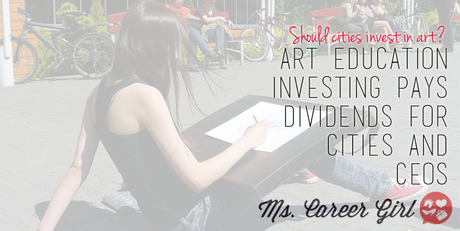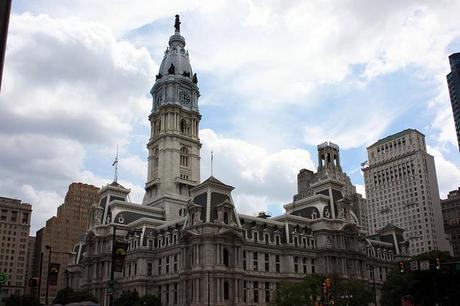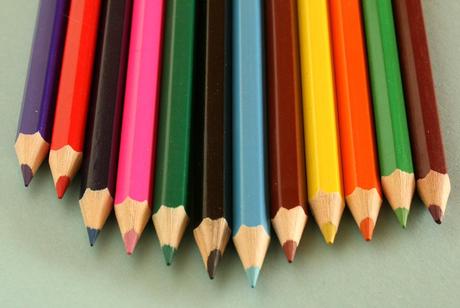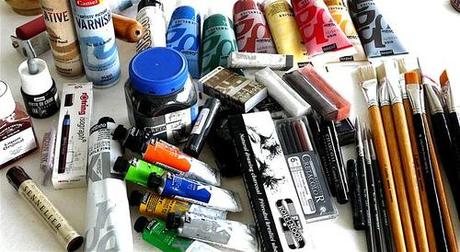
Finding Funds for Art Education
This past Thursday, I got the opportunity to sit down with Dick Blick CEO Robert Buchsbaum at Philadelphia City Hall for the A+ Art City Hall’s Annual Student Exhibit. On behalf of Dick Blick Mr. Buchsbaum, presented a check for $15K to be used for Philadelphia student art supplies, in the form of gift cards to be disbursed directly to art teachers. From the Mayor’s Office press release:
“The City of Philadelphia’s Office of Arts, Culture and the Creative Economy (OACCE), in partnership with the Philadelphia School District, presented its fall exhibition A+ Art in the Art Gallery at City Hall. Each year, the OACCE partners with the Philadelphia School District’s Office of Academic Enrichment and Support to select 100 of the best art projects from its end-of-year Young Artists exhibit at the Philadelphia School District headquarters to be displayed at the A+ Art exhibit.”

Philadelphia City Hall
To be sure, it couldn’t have come at a better time. Just last year, the city of Philadelphia passed what some were calling a “doomsday budget” that left schools to open without funds for administrative staff, books, or paper in the wake of a $304 million deficit. This year, it was in question whether or not schools would open on schedule with an additional $81-million budget deficit, just to reach last year’s “doomsday” funding levels. The situation is dire, but contributions such as this from the private sector speak volumes about the necessity and feasibility of investing in art education from the private sector. I asked Bob Buchsbaum his thoughts on the future of art education, and why even relatively small amounts of funding pay huge dividends for cities such as Philadelphia.
MCG: “With a $304 million deficit last year, the Philadelphia city school budget has been slashed, and arts programs were among the first to go. While it’s obvious that Philly art programs are in desperate need of support, why did your company choose to present these funds to Philadelphia? Do you yourself have any particular ties to the city, or were you fulfilling a need where you saw one?”
Buchsbaum: “The President of our retail operation has a pretty good relationship with the Mayor. I think the request came directly from the Mayor. We always try to accommodate when we can and Philadelphia has always been a very good customer for us. This is a relatively large contribution, not something we can do all the time, but it really feels good to do it.”
Philadelphia Mayor Michael Nutter promised last year to help find school and art education funds to close this gap by hiking the cigarette and liquor tax, and going after back taxes owed to the city.

Funds for art programs are not this easy to find.
MCG: “Blick offers aid to art education programs in other ways as well, offering free lesson plans and resources on their website. Can you tell me a little bit about the ArtRoomAid program, how it works, and how it’s helping art teachers facing slashed budgets?”
Buchsbaum: “The ArtRoomAid program is still in slow development. The idea is this: a teacher can go online, create [a list of] the needs for their classroom, and then promote those requirements to people they know. Possibly parents, charitable organizations, whomever. And also people on our website we can market to as well, so that there’s the opportunity to crowdfund art supply need for a classroom. It’s very similar to Donors Choose, which we do a lot of work with as well, where people can go put in a project and individually fund that project. So think of it as a wedding registry for a teacher. It’s been moderately successful.”

MCG: “As the CEO of one of the most prominent art supply retailers in the country, you are uniquely positioned to see the effects that the economic downturn and budget troubles have had on the practice of the arts themselves. Many school districts nationwide have slashed art education budgets to meet deficits, and we have a generation of children that have grown up without the same access to art education than their older brothers and sisters had. In the seven years since the recession began, have you seen that translate to a decline in new artists, new art programs and sales? Do you think that the underfunding of school arts programs is going to lead us to, or has already caused, a generational “artistic drought”? Or do you think that interest in the arts and creativity still grows despite a lack of resources?”
Buchsbaum: “My perspective would be it is still difficult. The number of jobs available as opposed to the output seems challenged. We always get very nervous from our business standpoint, we get nervous when we see the arts get cut, because when you don’t learn how to paint when you’re a kid you don’t pick it up when you’re older. Painting for a lot of people is not necessarily what they end up doing. They use it in some way for other groups like marketing, or it could be even in business. It’s not always that really practical business degree that makes the best businessperson. I have a liberal arts degree and I ended up going to business school eventually, but I was a liberal arts guy. So, just because you’re liberal arts doesn’t mean you’re not going to be employable, but it may not be painting, per se, that you’re doing to make your living.”

Art education supplies – small investment, large dividends for cities
Mr. Buchsbaum was ultimately hopeful for the state of art education, and stressed the importance of investing in the arts to revitalize urban areas, which we’ve discussed here before.
Buchsbaum: “Investment in the arts tends to be very high-paying for society. We invest the least of any country in the OECD. But you look at areas in terms of a city that become the popular areas, they’re almost always the artsy areas. I’m not just talking about the visual arts, I’m talking about plays and music and the whole gamut of the arts broadly, and all of it has been cut, and I think that that’s sad from an economic standpoint because you’ve cut so far beyond the point where a little bit of spend can do so much good. Think of a $304 million budget gap versus a $15K check, it’s nothing but it does so much, it has so much leverage within the context of teaching art because it’s just not that expensive. I think we’ve just pushed it sadly so far down, though, where the marginal spend here would add a lot more value than the marginal spend we’re trying to make in other places in our educational system.”
What do you think? Should we be cutting back or investing more in the arts when budgets get cut? Tell us in the comments below.

